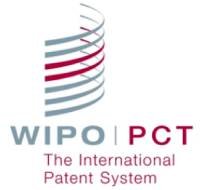- Start Business
Important Registrations
Startup India (DPIIT)/GEM
- DPIIT - Startup India Recognition
- 80IAC - Startup Tax Exemption
- DPIIT - Seed Fund Application
- GEM Portal Registration
- ESOP Policy
Special Purpose Entity
NGO & Others
- Section 8 Company
- Society (National or State)
- Private or Public Trust
- Multistate Co-Operative
- MLM Registration
- Tax
Book Keeping & Audits
- Virtual CFO Services
- Accounting & Book Keeping
- Statutory Audit
- Tax Audit
- NGO Audit & ITR
- FCRA Annual Return
GST Compliance
- GST Nil Return Filing
- GST Return Filing
- GSTR-9 Annual Filing
- GST LUT Filing
- GST Cancellation
Digital Accounting
TDS
- TDS Return Filing
- Salary TDS Return & Form 16
- Certificate of Lower TDS
- PAN Card & TAN Number
- Tax Litigation Support Service
- Payroll
HR Policy Document
- Appointment Letter
- Employment Agreement
- HR Policy or Manual
- Leave Policy Drafting
- Other HR Documents Drafting
Labour Law Registrations
- Shops & Estb. Act Registration
- Professional Tax - Employer (PTEC)
- Professional Tax - Employee (PTRC)
- PF Registration
- ESIC Registration
Payroll & Labour Law Return
POSH
- POSH Policy Creation
- POSH Training
- POSH Consultation
- POSH Return Filing (Compliance)
- POSH Case Advisory
- Compliance
- Companies Act
- INC 20A – Business Commencement
- First Auditor Appointment
- Share Certificate
- Statutory Record & Register
- Secretarial Retainership
Post Incorporation
- Allotment of DIN
- Director Appointment
- Director Removal/Resignation
- DIN Surrender
- Directors Disqualification Removal
Director Related
- Director DIN e KYC Filing
- Company Annual Return
- MSME Half Yearly Return
- DPT-3 Return Filing
- Annual Return of Foreign Company
Annual Filings
- Increase Authorised Capital
- Share Allotment – Rights Issue
- Share Allotment – Private Placement
- Share Transfer
- Share Transmission
Shares Related
- LLP Act
- LLP Registered Office Change
- LLP Name Change
- LLP Object/Activity Change
- LLP Agreement Changes
- LLP Form 3 Filing
LLP Change
- Addition of LLP Partner
- Removal of LLP Partner
- Partner Profit Sharing Ratio
- Increase LLP Contribution
Partner & Capital
- LLP ROC Annual Filing
- LLP Income Tax Return
- LLP Statutory Audit
LLP Annual Return
- Corp Restructuring & Exit
- Convert Pvt Ltd to Public Limited
- Convert Pvt Ltd to OPC
- Convert LLP to Pvt Ltd
- Convert OPC to PVT Ltd
- Convert Public Limited to Pvt Ltd
Conversion – Company
- Convert Partnership to LLP
- Convert Proprietorship to LLP
- Convert Pvt Ltd to LLP
- Convert Public Ltd to LLP
Conversion – LLP
- Close Inactive Company (STK-2)
- Winding Up of Active Company
- Close Inactive LLP (Form-24)
- Winding Up of Active LLP
- Surrender of Tax Registrations
Winding UP/Restructuring
- Convert Proprietorship to Pvt Ltd
- Convert Partnership to Pvt Ltd
- Active to Dormant Company
- Dormant to Active Company
Other Conversions
- FEMA & RBI
- FDI Reporting (FC-GPR) Filing
- FIFP/DPIIT FDI Approval
- RBI Annual Filing (FLA)
- Annual Activity Certificate (AAC)
- External Commercial Borrowings (ECB)
FDI Related
- NBFC Compliance
- NBFC Takeover
- Nidhi Company Compliance
- Micro-Finance Compliance
- NBFC Account Aggregator License
Fin-Corp
- Investment Advisor Registration
- Share Transfer Agent
- Portfolio Manager Registration
- Stock Broker Registration
- Merchant Banker Registration
SEBI
- Overseas Direct Investment (ODI)
- Annual Report (APR) for ODI
- USA Incorporation
- Singapore Incorporation
- Dubai Incorporation
Overseas Investments by Indians
- Companies Act
- Regulatory
- Food & Pharma
- FSSAI Registration
- FSSAI State License
- FSSAI Central License
- Eating House License
- FSSAI Renewal
FSSAI & Eating License
- FSSAI Modification
- FSSAI Annual Return (D1)
- Health Trade License
- AGMARK License
- CDSCO Registration (FDA)
Food Business – Others
- Retail Drug License
- Wholesale Drug License
- CDSCO Drugs Import License
- Drug Export NOC
- AYUSH License
Drug – Pharmaceuticals
- Activity Based
- Insecticide Registration
- Pest Control License
- Clinical Establishment Registration
Insecticide & Pest Control
- PSARA
- Factory License
- Trade License
- RERA Registration for Promoters
- RERA Registration for Agents
Special Activities
- Regulatory
- Model Approval Certificate
- Packaged Commodity Registration
- LMPC Importer License
- Legal Metrology Dealer License
- Legal Metrology Manufacturer License
Legal Metrology
- Legal Metrology Repairer License
- Legal Metrology License Renewal
- Legal Metrology Compliance & Audit
- Hallmarking-Jewellers
- Hallmarking Centre
Metrology & Hallmarking
- ORGANIC Certification
- HALAL Certification
- HAM Certificate
- BEE Certification
- AERB Approval
Other Certifications
- WPC-ETA APPROVAL
- WPC-Import Licenec
- WPC Experimental
- WPC- Demonstration Licenses
- WPC-Manufacturing Licence
WPC
- ETA (Self-Declaration) Certificate
- NW License
- Non-NW License
- DPL/NDPL
- SACFA Clearance
Telecom Product Certification
- BIS & Other
- ISI Mark Certification
- BIS Certification
- BIS CRS Registration
- Certificate of conformity
- ECO MARK
- BIS for Food products
- BIS LICENCE FOR TOYS
- BIS LAB Recognition Scheme
BIS Certifications
- Food & Pharma
- IPR
Trademarks Filing
Design & Copyright
- Design Registration
- Copyright Registration
- Copyright Infringement
- International Copyright
- Music License
Trademark Post Filing
International Trademark
- WIPO Trademark (Madrid)
- Trademark Registration in USA
- Trademark Registration in UK
- Trademark Registration in China
- Trademark Registration in Australia
International Patents
- PCT Patent Filing
- Convention Patent Filing
- Patent Filing in USA
- Patent Filing in UK
- Patent Filing in China
- Start Business
- Most Popular
- Private Limited Company
- One Person Company
- LLP Registration
- Partnership Firm
- Sole Proprietorship
- For Foreign Companies
- Subsidiary of Foreign Company
- Joint Venture of Foreign Company
- Project Office Registration
- Branch Office Registration
- Liaison Office Registration
- Important Registrations
- Gst Registration
- MSME Registration
- MSME Renewal
- Import Export Code (IEC)
- IEC Renewal
- Startup India (DPIIT)/GEM
- DPIIT – Startup India Recognition
- 80IAC – Startup Tax Exemption
- DPIIT – Seed Fund Application
- GEM Portal Registration
- ESOP Policy
- Special Purpose Entity
- Public Limited Company
- Nidhi Company
- Producer Company
- Microfinance Company
- NGO & Others
- Section 8 Company
- Society (National or State)
- Private or Public Trust
- Multistate Co-Operative
- MLM Registration
- Tax
- Book Keeping & Audits
- Virtual CFO Services
- Accounting & Book Keeping
- Statutory Audit
- Tax Audit
- NGO Audit & ITR
- FCRA Annual Return
- Income Tax
- Income tax Returns (ITR)
- Advance Tax Due Date
- Income Tax Notice Reply
- Tax Assessment & Scrutiny
- 15CA and 15CB Certification
- GST Compliance
- GST Nil Return Filing
- GST Return Filing
- GSTR-9 Annual Filing
- GST LUT Filing
- GST Cancellation
- Digital Accounting
- Zoho Books Setup
- Zoho Payroll Setup
- Tally to Zohobooks
- Busy to Zohobooks
- Quickbooks to Zohobooks
- TDS
- TDS Return Filing
- Salary TDS Return & Form 16
- Certificate of Lower TDS
- PAN Card & TAN Number
- Tax Litigation Support Service
- Miscellaneous
- GST Amendement
- 80G & 12A Registration
- Niti Aayog (Darpan) Registration
- NGO CSR-1 Filing
- FCRA Registration
- Payroll
- HR Policy Document
- Appointment Letter
- Employment Agreement
- HR Policy or Manual
- Leave Policy Drafting
- Other HR Documents Drafting
- Labour Law Registrations
- Shops & Estb. Act Registration
- Professional Tax – Employer (PTEC)
- Professional Tax – Employee (PTRC)
- PF Registration
- ESIC Registration
- Payroll & Labour Law Return
- Monthly Payroll Process
- PF Return Filing
- ESIC Return Filing
- Professional Tax Return Filing
- LWF Return Filing
- POSH
- POSH Policy Creation
- POSH Training
- POSH Consultation
- POSH Return Filing (Compliance)
- POSH Case Advisory
- Miscellaneous
- LWF Registration
- Contract Labour Act Registration
- Factory Registration
- Compliance
- Compliance – Companies Act
- Post Incorporation Compliance
- INC 20A – Business Commencement
- First Auditor Appointment
- Share Certificate
- Statutory Record & Register
- Secretarial Retainership
- Director Related
- Allotment of DIN
- Director Appointment
- Director Removal/Resignation
- DIN Surrender
- Directors Disqualification Removal
- Annual Filings
- Director DIN e KYC Filing
- Company Annual Return
- MSME Half Yearly Return
- DPT-3 Return Filing
- Annual Return of Foreign Company
- Shares Related
- Increase Authorised Capital
- Share Allotment – Rights Issue
- Share Allotment – Private Placement
- Share Transfer
- Share Transmission
- Company Changes
- Company Registered Office
- Company Object Change
- Company Name Change
- Company MOA Change
- Company AOA Change
- Miscellaneous
- ESOP Share Allotment
- Due Diligence
- Secretarial Audit (MGT-8)
- XBRL Filing
- Auditor Resignation or Removal
- Compliance – LLP Act
- LLP Change
- LLP Registered Office Change
- LLP Name Change
- LLP Object/Activity Change
- LLP Agreement Changes
- LLP Form 3 Filing
- Partner & Capital
- Addition of LLP Partner
- Removal of LLP Partner
- Partner Profit Sharing Ratio
- Increase LLP Contribution
- LLP Annual Return
- LLP ROC Annual Filing
- LLP Income Tax Return
- LLP Statutory Audit
- Corp Restructuring & Exit
- Conversion – Company
- Convert Pvt Ltd to Public Limited
- Convert Pvt Ltd to OPC
- Convert LLP to Pvt Ltd
- Convert OPC to PVT Ltd
- Convert Public Limited to Pvt Ltd
- Conversion – LLP
- Convert Partnership to LLP
- Convert Proprietorship to LLP
- Convert Pvt Ltd to LLP
- Convert Public Ltd to LLP
- Winding UP/Restructuring
- Close Inactive Company (STK-2)
- Winding Up of Active Company
- Close Inactive LLP (Form-24)
- Winding Up of Active LLP
- Surrender of Tax Registrations
- Other Conversions
- Convert Proprietorship to Pvt Ltd
- Convert Partnership to Pvt Ltd
- Active to Dormant Company
- Dormant to Active Company
- Compliance – FEMA & RBI
- FDI Related
- FDI Reporting (FC-GPR) Filing
- FIFP/DPIIT FDI Approval
- RBI Annual Filing (FLA)
- Annual Activity Certificate (AAC)
- External Commercial Borrowings (ECB)
- Overseas Investments by Indians
- Overseas Direct Investment (ODI)
- Annual Report (APR) for ODI
- USA Incorporation
- Singapore Incorporation
- Dubai Incorporation
- Compliance – Companies Act
- Regulatory
- IPR
- Trademarks Filing
- Trademark Search
- Trademark Registration
- TM Examination Report
- TM Show Cause Hearing
- TM Third Party Opposition
- TM Intervention Petition
- Design & Copyright
- Design Registration
- Copyright Registration
- Copyright Infringement
- International Copyright
- Music License
- Patent
- Patent Search
- Provisional Patent Filing
- Complete Patent Filing
- Software Patent
- Patent Renewal
- Trademark Post Filing
- Trademark Rectification
- Trademark Assignment
- Trademark Renewal
- Trademark Restoration
- Trademark Infringement
- International Trademark
- WIPO Trademark (Madrid)
- Trademark Registration in USA
- Trademark Registration in UK
- Trademark Registration in China
- Trademark Registration in Australia
- International Patents
- PCT Patent Filing
- Convention Patent Filing
- Patent Filing in USA
- Patent Filing in UK
- Patent Filing in China
- Others







